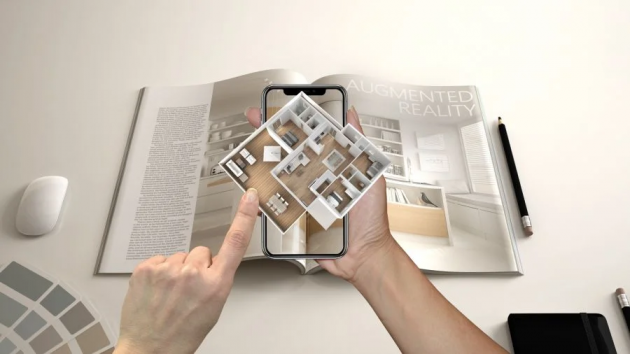Augmented Reality (AR for short) allows us to see the world as it is in front of us, but with an added layer of virtual experience. It enhances the real, physical world using visual digital elements, sound or movements.
If you use Snapchat or Instagram, you re probably already using some of the technology. The filters in these apps are a great example of Augmented Reality adding enhanced, digital imagery to a physical object which is already there.
Augmented Reality Apps for B2B
Augmented Reality apps are usually associated with B2C. But we often forget that when we re creating products, services and marketing campaigns for B2B, we re really selling to a person who works for a business. There are some fantastic ways to connect and engage with B2B customers and we ve included some Augmented Reality examples below.
- Cisco used Augmented Reality to create interactive online product catalogues. This is a fantastic way to make dry subjects more interesting and bring them to life to show users exactly what they ll be getting when they use Cisco products. This not only led to more sales, it also sped up the installation process by 30%. You can find out more here.
- Ford sells many of its cars to other businesses. At a trade show in 2017, they used AR to really stand out from other exhibitors. They allowed people to sit in a Ford F-150 and see what was happening beneath the hood on a screen. It was great publicity, made their booth the star of the show, as well as generating some excellent headlines for them.
- ADAMAPP s AR configurator. Visitors to the Kawasaki booth at the mDevCamp show in Europe started by meeting our robot receptionist, Pepper. They then had the chance to use our AR configurator. They created their dream motorbike using Augmented Reality to change the colours and other features, before seeing themselves sitting on the bike they created.
- IBM uses virtual reality to help their B2B customers visualise data. It gives them more insight into their numbers and really builds up a story. IBM s immersive insights allows customers to visualise sales by destination on a map, see charts and graphs grow and more.
AR Games
AR games are the most common use of Augmented Reality, and usually the one we think of first. They re a great way to connect with consumers, allow them to experience something different and ultimately increase engagement. Some examples of the best AR games include:
- Pokemon GO. Pokemon Go is the most famous example of an Augmented Reality game. It took the world by storm, allowing players to find Pokemon all over the world. Pokemon GO captured the imagination of adults and children alike, and got people outside and walking more than they usually would.
- Jurassic World Alive. This popular AR game allows users to see giant dinosaurs in their modern life. You can also fight other users dinosaurs in real time.
- WallaMe. This is the most sociable of the Augmented Reality games. It allows you to connect with other users and leave hidden messages around a city. A great B2B use of this AR would be around a conference when you have large amounts of people in one city.
- Emoji Hunter. Our very own team at ADAMAPP created an Augmented Reality app. Collect emojis in your own home and watch your bounty grow. You can explore it for yourself here.
- Egg, Inc. This AR app lets you build a chicken empire in your own home. Every time an egg hatches you ll be notified and see it around your house. It s a great one for families.
Augmented Reality in social media
The most prevalent but often overlooked use of Augmented Reality is in social media. Filters have become so ubiquitous on Instagram and Snapchat that we often find ourselves blurring the lines between reality and AR. Snapchat led the way with its live filters, and Instagram quickly followed.
The pandemic led to a huge rise in the use of Augmented Reality in social media, with clothing brands offering users the chance to virtually try on their clothes. And homeware brands showing how their furniture would look in your home through Instagram. Snapchat is still at the forefront, and has recently added Local Lenses. This allows users to collaborate by transforming areas of their cities into canvases to create art and imagery.
The Future of Augmented Reality in 2021
In 2020 there were 1 billion Augmented Reality users. And in 2021 we expect AR technology to really take off.
After the pandemic there s been an even bigger use of technology, which will see users more willing to try new things. We re used to seeing the world through our lenses and screens, consumers spent 2020 buying almost exclusively online and businesses need to jump on that trend.
Facebook is rolling out AR advertising, while Snapchat and Instagram are expected to build on their use of the tech.
Plus, we ll see Augmented Reality used to increase visits to the high street and attract users to particular shops.
As consumers begin to expect AR to become a part of their daily lives, B2B Augmented Reality is likely to become more popular.
ADAMAPP Augmented Reality Development
At ADAMAPP we re excited about the future of AR. Our expert team are constantly evolving and building their skills, and we can t wait to apply them to your business.
You can find out more about our work with Augmented Reality and other tech, including app development and AI solutions.
Want to create an Augmented Reality game or use our AR configurator in your business? Get in touch with our lovely team of experts.

